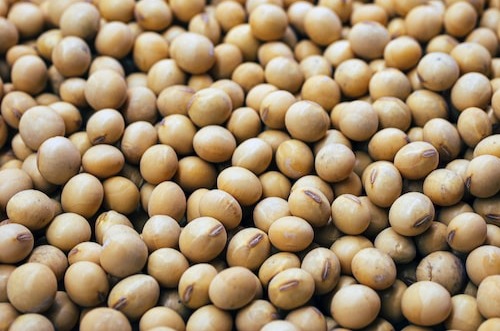W18: Soybean Update

In W18 in the soybean landscape, Brazilian soybean exports in May are expected to reach 12MMT, down from April’s volume of 14MMT. In the first four months of 2023, Brazilian soybean exports reached 33.47MMT, up 3.4% compared to the same period in 2022. StoneX estimates 2023 Brazilian soybean exports to total 96MMT, an upward adjustment compared to 78.7MMT in 2022 when the crop was smaller due to drought and lower planted area. Datagro revised upwards the 2022/23 Brazilian soybean production estimate to 155.6MMT from 153.7MMT in its previous projection, an increase of 19.2% compared to 130.58MMT harvested in 2021/22. Besides that, Datagro maintained the projection of the area cultivated with Brazilian soybean at 44.22M ha, 2.8% more than the 43.02M ha of the planting intention, disclosed in July 2022, and 4.9% above the 2021/22 harvest of 42.16M ha.
With 80% of the soybeans harvested in the state of Piaui in northeastern Brazil, the president of Aprosoja do Piaui is expecting a record statewide yield of 63 sacks per hectare, an increase of 10% to 13% compared to 2021/22. Soybean production has been expanding in northeastern Brazil in recent years due to lower land costs and reduced transportation costs to ports. However, the record large crop is causing problems with storage and logistics, causing Brazilian farmers to either sell their soybeans directly from the field or invest in temporary storage such as silo bags. ANEC reports that the negative premium for Brazilian soybean exports, with a record harvest aggravating the country's storage deficit and putting pressure on port operations, attracted China, the largest global importer. However, there are signs that Chinese demand is lower than expected, pointing to projections of exports in May below the shipments in April and March by Brazil.
The USDA reports that 19% of the US soybean crop was planted in W18, compared to 9% in W17 and the five-year average of 11%, with generally ideal conditions in parts of the Midwest and Plains canceling out weather-related delays in other areas. The USDA also outlines that W18 US soybean export inspections were pegged at 401.98K MT, 24.25K MT more than in W17, but 204.13K MT less than in the same period in 2022, with shipments mainly destined for China and Germany. So far in the 2022/23 season, US soybean inspections amount to 47.452MMT, up compared to 47.253MMT in the same period in the previous season. CIARA-CEC projects Argentine soybean milling in 2023 to reach 27MMT, a decrease of almost 12MMT compared to 2022, and a drop of 18MMT compared to the record of 45MMT reached in 2016, becoming the lowest in 18 years. In Q1 2023, Argentine soybean milling amounted to 5.5MMT, down compared to 8.1MMT and 9.4MMT in Q1 of 2022 and 2021, respectively. The downtrend is attributed to a lower supply of soybeans available at harvest, due to the impact of the drought, and the drop in milling volumes, having a full impact on foreign exchange earnings.
APK-Inform indicates that Ukrainian soybean exports in April are expected to more than halve to 160K MT, due to a significant decrease in demand from Poland, Romania, and other EU countries. In March 2023, Ukrainian soybean exports reached 417K MT, up 27% MoM and the highest monthly figure since January 2020, with shipments mainly destined for Turkey (48%), and EU countries (37%). From September 2022 to March 2023, Ukrainian soybean exports reached 2.4MMT, the highest shipments over the last three seasons, with a little less than half going to EU countries. However, in the future, import demand for Ukrainian soybeans is expected to be significantly adjusted under the influence of external factors such as restrictions on the import of Ukrainian products by a number of EU countries, sufficient reserves of raw materials from key European importers, and an increase in the supply of new oil crops from South America.





